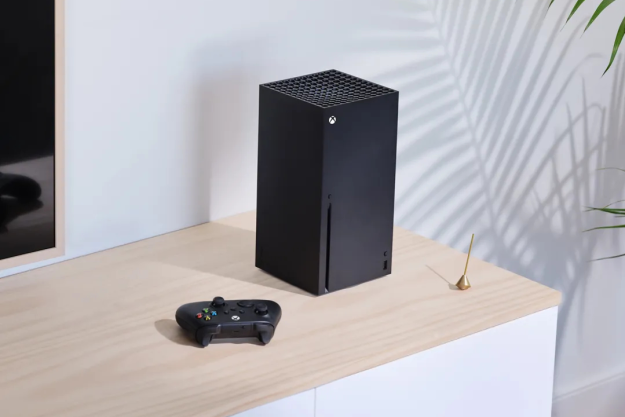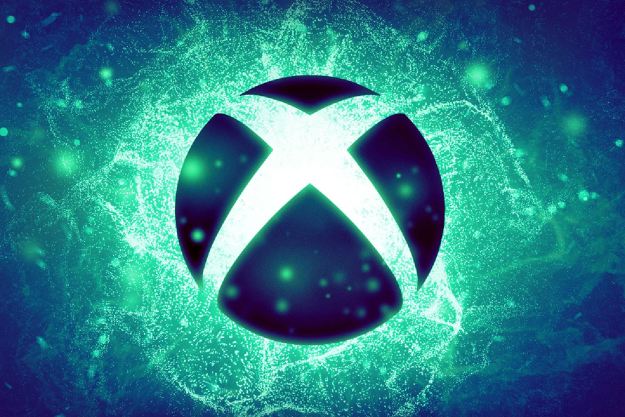In a surprising turn, Microsoft didn’t wait until E3 2020 to reveal its next console. Instead, the company placed its bets on introducing the Xbox Series X console during The Game Awards — conveniently before Sony unearthed its fifth-generation competitor (possibly) in February.
While you’ll read loads of jargon covering 8K support, Variable Refresh Rate, Auto Low Latency Mode, real-time ray tracing and whatnot, gamers should focus on one specific detail: Storage. The Xbox Series X, due to hit shelves in the 2020 holiday season, relies on a solid-state drive (SSD). That’s really, really good news.

PC enthusiasts and hard-core gamers know exactly why this is a big deal. Hard drives are simply old-school technology. Think of them as a vinyl record player, only you’re spinning multiple magnetic aluminum platters in a single enclosure. They’re all accessed by multiple read/write heads (needles) that move across the surface of each platter.
This design worked for decades. Manufacturers increased capacity by inserting additional platters into a single enclosure. They used various technologies to enable these growing tight stacks and reduce friction, like injecting helium. Manufacturers also increased access times by implementing a faster spin. Currently, you’ll find hard drives in two speeds: 5,400 or 7,200 rotations per minute (RPM).
But over time these mechanical components fail.
SSDs, in turn, don’t include moving parts. Think of this design as a city block. Using a very basic description, data travels to and from multi-floor offices (cells) using “streets.” Because these offices and streets remain stationary, travel time is significantly faster than spinning metallic platters.
Problem is, SSDs are more expensive than hard drives. A hard drive with a 4TB capacity can cost around $85 whereas an SSD with the same capacity can cost $450. That’s why consoles prior to the Xbox Series X and PlayStation 5 rely on hard drives.
Games will get better too
With an SSD, game load times are exponentially faster because, again, you have no moving parts. Read and write times typically start at 500MB per second whereas a hard drive may reach up to 160MB per second. Even more, stick-shaped SSDs that slide into a special M.2 slot can reach well over 2,000MB per second. We won’t even get into the differences between SATA and PCIe connections.
Yet games are presumably still designed with hard drives in mind. Despite being common in PCs, developers are forced to consider that consoles that rely on this slower storage solution. That means placing multiple identical assets into the build to reduce seek times, thus creating large multi-gigabyte packages. That also means painfully enduring logos, intros, and cutscenes you can’t escape while portions of the game loads in the background.

Ultimately, SSD pricing has reached a point where console manufacturers can now offer this storage device without breaking everyone’s wallet. We currently don’t know the capacities or the genuine speeds at this point, but gamers presumably won’t pay insane prices for the Xbox Series X or PlayStation 5 due to costly storage.
As seen during The Game Awards show, Microsoft’s Project Scarlett sports a new, sexier name (love that subliminal messaging) to match the rigid new design. We don’t know the full hardware specification, though Microsoft clearly states that its “next-generation SSD will virtually eliminate load times.”
No, an SSD won’t eliminate load times. It will, however, significantly reduce the excruciating wait. Sure, real-time ray tracing and 8K visuals are great, but immediately jumping into a game is far more attractive than anything rendered on AMD’s Radeon GPU.
Hopefully, Microsoft (and Sony) live up to all their console SSD hype.
Editors' Recommendations
- Fallout 4 is finally getting free Xbox Series X and PS5 upgrades
- Xbox games on PS5? It’s not as shocking as you think
- Our favorite Xbox Series X games of 2023: Starfield, Hi-Fi Rush, and more
- Xbox’s 2023 games feel like the Series X launch lineup we never got
- Leaked Xbox controller could fix the most underwhelming thing about the Series X


